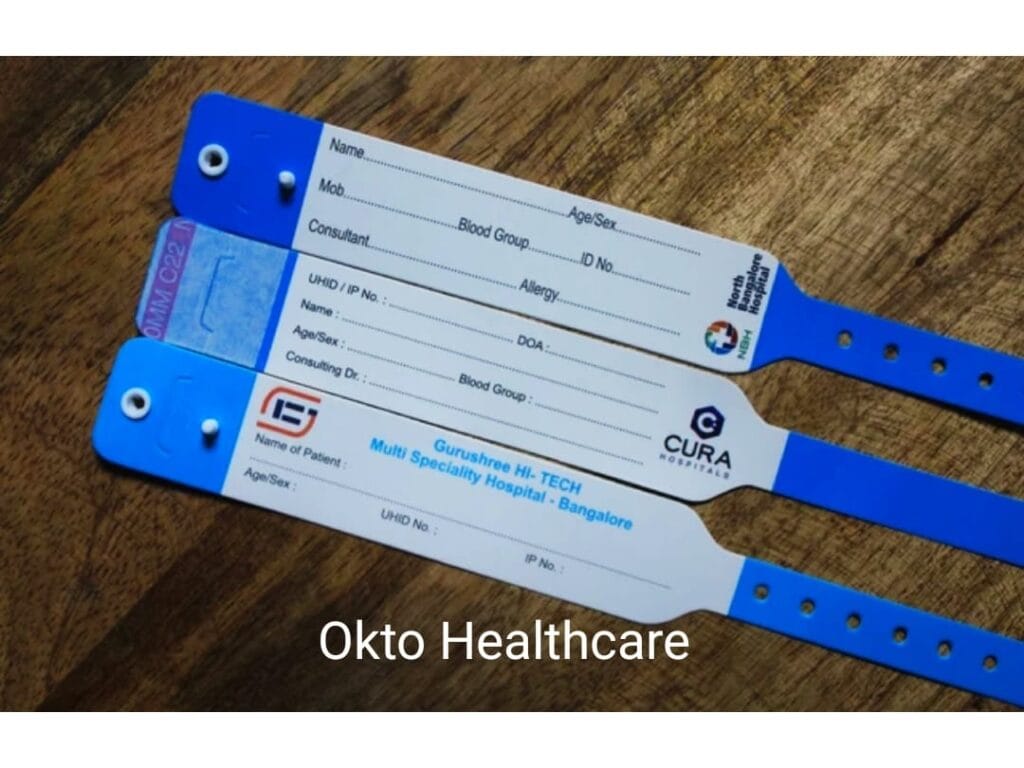The Key Features of an Efficient Patient Identification Band in Health Care
The Key Features of an Efficient Patient Identification Band in Health Care
Blog Article
Improving Client Care With Reliable Identification Bands
The implementation of reliable identification bands is a pivotal element in improving individual treatment within medical care setups. As the landscape of patient identification progresses, one need to think about the ramifications of these systems on overall healthcare shipment and individual end results.
Importance of Patient Recognition
Making sure precise patient identification is critical in healthcare setups, as it directly affects the safety and security and top quality of treatment supplied. Misidentification can bring about serious errors, consisting of providing the incorrect medication, executing wrong procedures, or miscommunicating vital individual information. Such errors not only jeopardize person security however can additionally cause lawful ramifications and reduced trust fund in health care systems.
Effective person recognition is fundamental to developing a safe and secure environment where people get tailored and proper care. It facilitates the accurate paperwork of case histories, allergies, and treatment strategies, making certain that healthcare service providers have accessibility to vital information in all times. Moreover, robust recognition methods help enhance interaction amongst clinical personnel, boosting partnership and minimizing the danger of blunders.

Types of Recognition Bands
Recognition bands play a vital function in preserving accurate individual documents and improving safety and security within health care environments. Various kinds of identification bands are utilized to satisfy the specific demands and requirements of different patient populations.

An additional type is the ankle joint band, which is particularly beneficial for babies and newborns, making certain that recognition continues to be undamaged even throughout care treatments. Specialty bands, such as those for allergic reaction alerts or drop threat indicators, provide additional layers of safety and security by drawing prompt focus to important person conditions.
Lately, electronic identification bands have acquired appeal, incorporating barcodes or RFID innovation that can be scanned to rapidly get person information. These bands streamline workflows and reduce the danger of human error during patient identification processes.
Advantages of Efficient Identification
Reliable recognition of patients with the usage of recognition bands adds considerably to general patient security and care high quality. By guaranteeing that each individual is accurately determined, health care carriers can effectively match clinical treatments and treatments to the proper person, minimizing the risk of errors. This is especially vital in environments with high individual turn over, where the capacity for misidentification is better.
In addition, reliable recognition bands enhance communication among healthcare groups. Exact and clear person identification fosters collaboration and ensures that all group participants are mindful of a client's details requirements and case history. This communication is necessary for providing collaborated treatment, particularly in emergency situations where time is essential.

Inevitably, reliable recognition via making use of identification bands not just safeguards people yet additionally advertises a society of security within health care centers (Patient Identification Band). By prioritizing accurate identification, health care organizations can boost outcomes and boost the total patient experience
Executing Recognition Systems
While the value of individual identification is well recognized, the implementation of durable recognition systems postures a complex challenge for medical care organizations. Establishing efficient identification systems calls for a thorough method, incorporating modern technology, personnel training, and process combination.
First, companies have to select appropriate identification innovations, such as barcode scanning, RFID, or biometric systems. Patient Identification Band. These innovations need to be examined based upon expense, use, and compatibility with existing framework. A pilot go to these guys program can assist determine potential issues before full-scale application
Following, detailed training for staff is necessary. All personnel need to recognize the relevance of accurate person recognition and excel in the use of the picked technologies. Normal training updates and analyses can reinforce best methods and guarantee ongoing conformity.
In addition, healthcare organizations ought to develop standard procedures for patient identification throughout all departments, decreasing inconsistencies and improving interaction. Normal audits can help determine gaps in adherence to these protocols.

Eventually, an effective implementation of identification systems not only enhances client security however likewise cultivates a society of liability and persistance within medical care settings, ensuring reliable and regular person treatment.
Future Trends in Person Recognition
Improvements in innovation are set to reinvent individual identification methods in medical care setups. The assimilation of biometric identification techniques, such as fingerprinting and facial acknowledgment, is anticipated to improve accuracy and protection. These innovations can significantly decrease the risk of misidentification, guaranteeing that clients have a peek at these guys get the appropriate treatments and medicines.
Moreover, the implementation of blockchain technology for client documents is gaining traction. This decentralized approach can provide a safe and straight from the source secure and tamper-proof approach for managing person identifications, therefore streamlining accessibility to essential information throughout different doctor.
Another trend is the increasing use of mobile health applications that take advantage of QR codes for client recognition. These applications enable real-time updates and easy access to individual data, equipping medical care professionals to make educated decisions promptly.
Furthermore, man-made knowledge (AI) is poised to play an essential duty in examining person recognition information, recognizing patterns, and forecasting possible recognition errors prior to they take place.
As these technologies develop, they guarantee not only to improve individual safety however also to improve the general effectiveness of health care shipment systems. Accepting these developments will certainly be crucial for future-proofing patient treatment techniques.
Verdict
To conclude, efficient recognition bands are essential for boosting individual security and care quality within health care settings. By minimizing the threats connected with misidentification, these bands help with precise and prompt info retrieval, inevitably enhancing interaction amongst health care suppliers. The application of durable recognition systems not just fosters a culture of safety but additionally positions healthcare organizations to adapt to future fads in client recognition modern technology, making sure optimal end results for people in varied clinical atmospheres.
As the landscape of client recognition advances, one must think about the implications of these systems on total health care shipment and patient end results.Effective client recognition is essential to developing a secure setting where patients receive personalized and appropriate treatment. Ultimately, focusing on efficient person recognition methods not just fosters a culture of security yet also contributes to enhanced patient end results and total satisfaction with health care solutions.
Reliable recognition of people with the use of recognition bands contributes substantially to total patient safety and security and care quality. The application of durable recognition systems not only cultivates a society of safety but also positions medical care organizations to adjust to future trends in person recognition technology, ensuring optimum results for people in varied scientific atmospheres.
Report this page